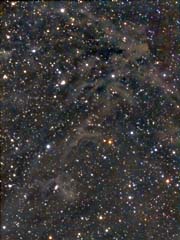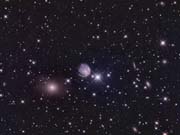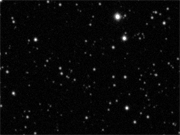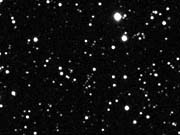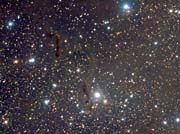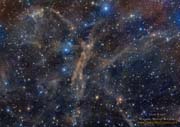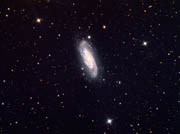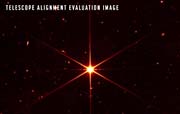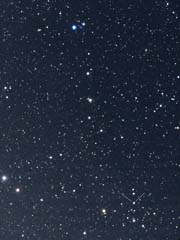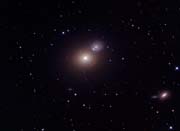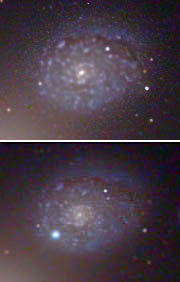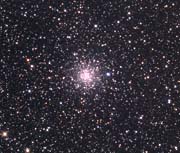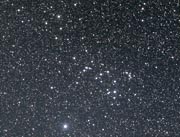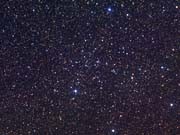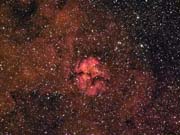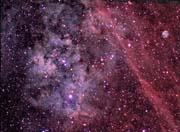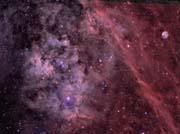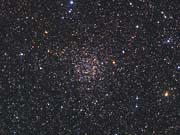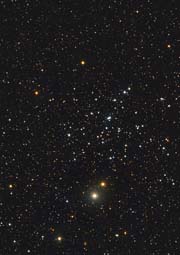The faint molecular clouds MBM (Magnani-Blitz-Mundy) 7 and 8 are situated in Aries, relatively easy to locate because the mag 12.4 galaxy NGC 918 is 'buried' in the lower MBM 8 section. But very faint needing long exposures and dark clear skies. Unfortunately something in very short supply this winter. I need more data - only limited opportunites were available in early December and with passing clouds and haze over two nights of imaging (1st and 6th December 2021) I only managed 9 useable Luminance and 3 each RGB subs, all 15 minutes binned 2x2. So had to get rid of a lot of noise, with consequent loss of fine detail. I still hope to get more data but the weather forecast is extremely unpromising for the next week or so and then the Moon will be back! So this may have to do. As well as NGC 918, clearly visible in the lower section, mag 12.5 NGC 932 is lurking in the top left corner, with Arp 276 (13th mag NGC 0935 and IC1801) about 1/3rd down the left hand side. North is up. QSI683 on TS65 Quad telescope (420mm fl). Several more Luminance files on 5th January 2022 only slightly improved the details - again there was thin background haze, and snow covered ground added to the background brightness. So enough is enough!
